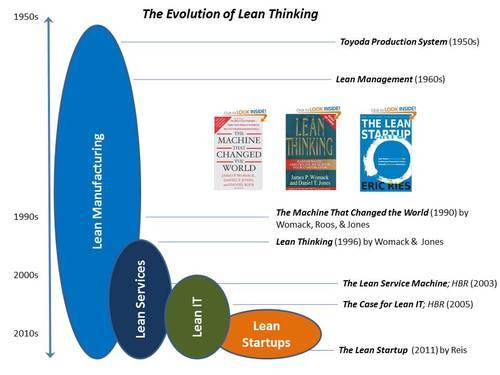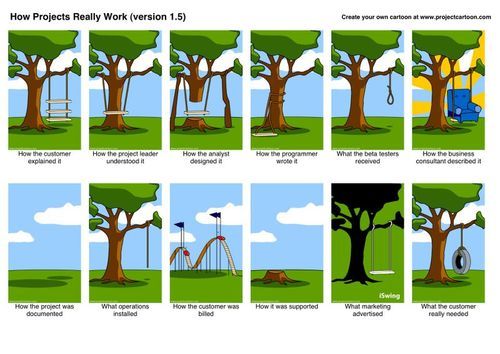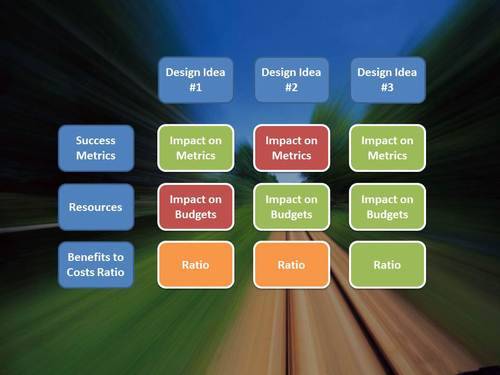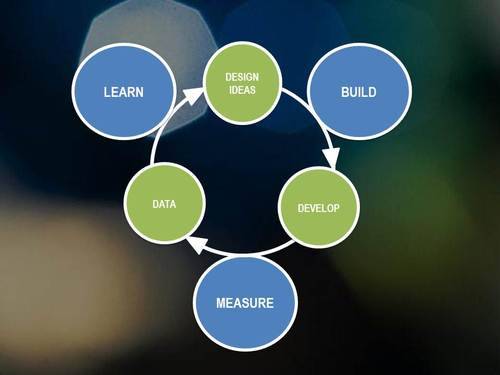Are Lean and Innovation Compatible?
A bad system will beat a good person every time. – W. Edwards Deming
With the evolution of Lean thinking—from manufacturing to services to IT and most recently to startups—Lean concepts are now being applied in almost every industry and every size organization. The book The Lean Startup by Eric Reis has taken the technology world by storm and influenced the thinking of many in startups and large organizations.
The Lean Startup approach was created for organizations dedicated to creating something new and of value under conditions of extreme uncertainty. Which is another way of saying that it was created for organizations seeking to innovate and create value from their innovations. The approach applies Lean thinking to leverage both money and human creativity more efficiently in the creation of something new.
The success and popularity of Lean thinking has led many to ask a fundamental question: Are Lean and innovation compatible? Can Lean co-exist with innovation? Or, does the structure and discipline imposed by Lean diminish the creative process?
In this post, I’ll argue that Lean can indeed compliment, and even enhance, the innovation process. Lean makes innovation more predictable in achieving a goal shared by both Lean and innovation: meet customer needs in a cost-effective manner. Lean can reduce uncertainty in the innovation process and produce high-value, high-impact innovation.
So, what is Lean thinking?
Lean thinking centers on a few core concepts:
- Creating value for the customer and
- Practicing respect for people.
Lean practitioners seek to understand who the customer is and what he or she values. And, armed with that understanding, they create value for the customer in the most efficient manner possible. Lean also seeks to empower people while also promoting coaching and collaboration. People are held accountable to the system and for helping to improve it.
The Evolution of Lean
Lean thinking has its roots in manufacturing. In the early 1900s, Henry Ford was the first to bring greater structure and discipline to manufacturing and fully integrate the manufacturing process. He called this a flow process. In the period after World War II, Kichiro Toyoda, Taiichi Ohna, and others at Toyota introduced a series of innovations that made it more possible to provide both continuity in process flow and a wider variety in product offerings. They called their new process the Toyota Production System (TPS). In the 1960s Toyota introduced lean management techniques that complimented TPS. As Toyota grew as a company and became more successful, more and more people became interested in these techniques.
In 1990, James Womack, Daniel Roos, and Daniel Jones wrote a book called The Machine That Changed the World that popularized TPS, lean manufacturing and lean management. More and more manufacturing firms, across the globe, continued to adopt lean thinking and integrate it into their management culture and manufacturing processes.
The success of Lean within manufacturing led others to wonder whether Lean concepts could benefit other industries. If Lean worked so well in manufacturing, could it also help services businesses improve the value they delivered to their customers? Services business, such as banks, insurance firms, and hospitals, began to find success with Lean. This led to the era of Lean Services, and services firms continue to benefit from lean thinking.
Around the same time, pressures on IT organizations to increase value and reduce costs led many firms to apply Lean thinking to IT. In 2005, Harvard Business Review published an article titled, “The Case for Lean IT.” Many IT groups and IT vendors responded with increased focus on Lean and the term Lean IT was coined.
More recently, Eric Reis popularized the concept of applying Lean to startups in his book The Lean Startup. The Lean Startup approach helps startups use both money and human creativity more efficiently and effectively. Inspired by lessons from lean manufacturing, it relies on empirical results that validate learning. This is brought about by rapid experimentation. The approach focuses on learning what customers actually want and measuring actual progress, and it encourages organizations to shift directions with agility.
The figure below depicts the evolution of Lean: from its origins in manufacturing, to its adoption in services and IT, and to its more recent application to startups.

The Foundation of Lean
Who is the Customer and what do they value?
Identifying the customer and understanding what they value is no easy task. Some customer needs are relatively straightforward. They could be solved by obtaining and using a simple service or a few items. However, the majority are much more complex. When considering what customers value, questions arise such as:
- What experience does the customer value?
- What attributes of the product or service would the customer like?
- How does the customer value their time?
- When does the customer want to use/consume the product/service?
Anyone involved in a large project has likely experienced the challenge of truly understanding who the customer is and what they value. Indeed this is one of the challenges that typically leads projects to fail outright or fail to deliver the intended return on investment. In fact, this misunderstanding is so common that it led to the popular cartoon below that pokes fun at the different interpretations of what a customer values.

Lean generally considers the customer to be the person paying for the product or service that is being consumed. It addresses the challenge of understanding what customers value by spending more time with actual customers.
Most managers have a difficult time truly understanding customers, their needs, and seeing the path customers walk as they solve their problems. And, many are not aware of the fact that they lack this understanding. They assume that they understand more about their customers than they really do.
Lean practitioners spend a good deal of time observing customers and mapping the path they take as they solve problems. When innovating to solve customer problems that are less well defined, practitioners spend time with customers to listen, observe and develop empathy for the context of a problem.
Once practitioners understand the path customers take as they solve problems, they begin to explore the experience of customers as they walk this path. What steps in the process or features in the product are valued and what is wasted time or waste in the form of an unneeded feature? What is the customer thinking and feeling at each point?
There are many techniques and approaches used to develop this level of customer understanding. However, the common themes are:
- Deeper levels of customer intimacy and understanding are absolutely critical to developing value. This is the foundation of Lean thinking.
- The best way to develop this understanding is through observing and interacting with actual customers. This process can be enhanced through research and survey data, but the actual observation and interaction is what leads to deeper levels of empathy and understanding.
The Lean Innovation Machine
Today, many organizations are using Lean thinking to optimize the innovation process. The key to this is balancing creativity with the structure provided by Lean—providing just enough structure and discipline in the process without snuffing out the creative process.
Knowledge@Wharton cited this example of how Pixar combines Lean with innovation:
Hollywood animation company Pixar, the maker of blockbuster movies including the “Toy Story” series and “Finding Nemo,” is a good example of how innovation and lean practices can enhance outcomes. Pixar has combined lean and innovation to good effect, according to Kartik Hosanagar, Wharton professor of operations and information management. Working within the movie industry “where lack of predictability is the norm,” Pixar has created a set of processes that emphasizes team-based collaboration and continuous feedback loops to help overcome creative blocks and track deliverables, but without the stress that could go with a regime of control.
Pixar’s record is proof that lean and innovation can coexist. “Pixar hasn’t had a single failure as yet. All its projects have been successful,” Hosanagar says, adding that unlike the rest of the movie industry, it has never bought scripts from outside; it develops all its ideas and scripts in-house. “I discovered that much of what the industry uses is madness; what Pixar uses is a method to the madness,” says Hosanagar, who for the last year has been fascinated by the company while studying it along with Jehoshua Eliashberg, a Wharton professor of marketing, operations and information management.
One of the techniques used by teams at Pixar is daily meetings where team members share what they are working on, provide feedback, and help each other remove any obstacles or impediments. The point isn’t tracking or controlling people. Team-based collaboration is critical to the creative process, and people need to discuss work that is in process and not yet complete. The openness and transparency provided by this interaction fosters real-time collaboration and speeds the innovation process.
Another aspect of Lean combined with innovation is the use of Lean to focus the innovation process on creating maximum value for customers. To do this, teams use the deep understanding of the customer needs they developed earlier to define a few simple metrics used to measure success from the customer’s point of view. These measures of success are powerful enablers. They focus the team on what matters most and provide a way to evaluate design ideas.
Some teams use a process called impact estimation to consider different design ideas and how those ideas are likely to impact customer success metrics. This is more often art rather than science, but it provides the discussion framework for considering customer impact. Teams also estimate the resources required for each design, thus producing a ratio of anticipated benefits to anticipated costs. The process is illustrated in the example below.

Another aspect of Lean combined with innovation is the emphasis Lean places on empirical results and validated learning. The team’s goal is to put something in front of customers as soon as possible in order to get their feedback. Rapid iterations and feedback loops allow teams to test their earlier hypotheses of customer value. Customers provide feedback and teams observe and gather data around customer behavior, usage, and experience. The knowledge gained through this process allows teams to adjust and pivot in order to maximize customer value.
There is nothing so useless as doing efficiently that which should not be done at all. ~Peter F. Drucker
The illustration below depicts this process and feedback loop. The goal for the team is to move through this cycle as quickly as possible.

Lean combined with innovation marries the structure that lean brings with the freedom and collaboration that creative professionals crave. The approach also meets the needs of business executives who want to invest in innovation but eliminate, as early as possible, design ideas and projects that are doomed to fail. The process drives innovation that customers value while being as efficient as possible with resources.
This post presents the concepts of Lean innovation. However, in reality, the Lean innovation practices of teams varies significantly. The key is to discover what works best in your organization.
If your organization doesn’t have an innovation process (or one that it is happy with) it’s worth considering Lean thinking. If you are combining Lean and innovation, let us know what practices and techniques you are using. Please share what is working best in your organization.
A corporation is a living organism; it has to continue to shed its skin. Methods have to change. Focus has to change. Values have to change. The sum total of those changes is transformation. – Andrew Grove



